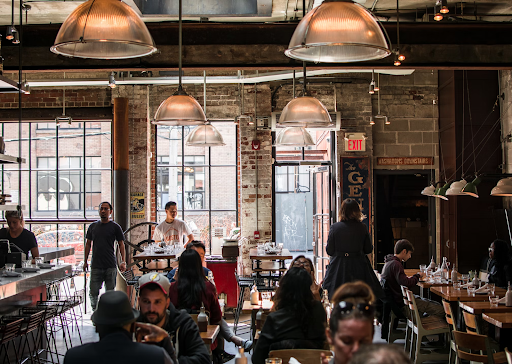“Expense control” is the name of the game in bottomline revenue growth. How successfully you manage your restaurant’s operating expenses, like cost of goods sold and wages, affects your business’s profitability and over financial sustainability.
Many restaurant owners have shared with us how challenging it can be to make the right cost-saving changes that positively impact their bottom line. These changes cannot be too sweeping thus negatively impacting operations or guest experience, but also not minor resulting in insignificant bottom line growth over a long period of time.
How do successful restaurants approach bottom line growth? With the right approach to analyzing their expense data, restaurants can find their north star to implement the right expense-related changes.
What is Bottomline Revenue?
Different from top line revenue, which speaks solely to gross sales, bottomline revenue is a much better indicator of overall business health.
Bottomline revenue – which gets its name from the “bottomline” on a business’s income statement – reports income after deducting all expenses from revenue. In short, bottomline revenue is how much profit your business is generating.
Bottomline revenue growth requires expense management just as much as driving more sales; from managing operational and ingredient costs, to vendor relationships, staffing, and even rent. For restaurant operators, data is the best vehicle to positively impact their business’s bottomline revenue and ensure greater profitability.
How to Apply Data in Improving Bottomline Revenue
Using data requires a focused effort, but the right approach on the outset can ensure you see the most
success. Oftentimes, changes that affect the bottomline aren’t actually in your control – for instance, a vendor raising their prices, or inflation. Here are five tips to help you leverage the power of data to safeguard your bottomline.
1. Assemble Your Team
Becoming a data-driven organization starts with people, from your managers and those in charge of vendor relations to your frontline staff. The right employees must have easy access to the proper systems to ensure all costs are tracked and measured over time.
Fostering a team culture that places emphasis on the importance of data for the overall sustainability of your business is foundational to making a tangible impact on your restaurant’s bottomline revenue. When your employees are all rowing in the same direction, a lot becomes possible.
2. Keep Close Tabs on Your Inventory
By forecasting item sales with your past customer purchase data, you can allocate an appropriate level of spend on ingredients and food items to your vendors. Over time, you can minimize instances of overstocking your inventory while avoiding the risk of running out of inventory as well.
Tracking variances between your theoretical and actual food costs also emerge with time. These metrics can be traced to portion sizes, ingredient shrinkage, and even food waste (which we’ll cover next!).
3. Manage Food Costs and Reduce Waste
From ingredients to beverages and condiments, being especially mindful of your inventory rotation can prevent food waste. Pre-consumer waste – that is, food waste that is created before it even reaches your customer – accounts for one third of food waste. In other words, that is loss which is completely preventable on the part of restaurants.
With sales data, you can better forecast the required inventory so you’re not overspending on unnecessary inventory that goes to waste. This enhances your profitability by reigning in your food costs. Compare your POS sales data to your vendor orders, and identify the biggest gaps from customer purchases to item sales.
4. Build Review Opportunities into Your Routine
By measuring outgoing costs and incoming revenue on a regular cadence, you can ensure total control over the factors affecting your bottom line. From your point of sale system to online booking tools, you can analyze the key data points that are most pressing for your overall profitability.
On an annual basis, keep an eye out for variances in ingredient costs – this may be a calling for a slight price increase to protect your current margins. When instances like these arrive, it may be necessary to tweak your portioning or even consider new vendors. This can protect and sustain your bottomline growth, long term.
5. Respond to Labor Trends
Similar to handling variances in labor costs, adjusting for increased labor costs in your menu pricing can sustain bottomline growth over an extended period of time. This is where having a pulse on your staffing demands, and ensuring you don’t wind up overstaffing, is crucial. A restaurant still needs workers to run it, and you have to keep those employees happy to deliver the best guest experience, so it is always a fine line to maximize profitability.




